In This Article
Types of Hair Transplant Techniques | FUE, DHI, FUT Explained
Hair transplant has become one of the most effective solutions for treating permanent hair loss. It has emerged as the popular choice for many to help restore their natural-looking hairline. With advancements in dermatology, multiple hair transplant techniques are now available to address various concerns and levels of hair loss, catering to a wide range of client expectations. Each type of hair transplant varies in its procedure, recovery, and results. In this blog, we’ll explore the most popular types of hair transplant techniques and help you understand which option may be right for you.
In This Article
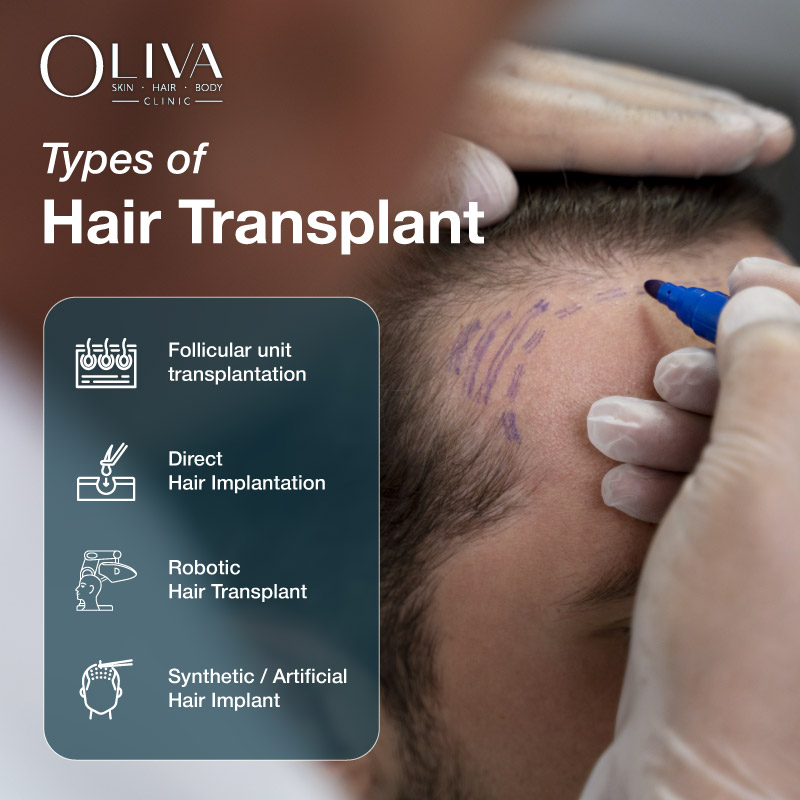
Types Of Hair Transplant Techniques
Here are the different types of hair transplant techniques that give you a thorough understanding of how each works and what you can expect:
-
FUE:
Follicular Unit Extraction (FUE) is a popular hair transplant technique that can be tailored according to an individual’s hair restoration goals.
What it is and how it works:
FUE is a minimally invasive hair transplant treatment. During the procedure, the surgeon extracts individual hair follicular units from the donor area, which is usually the back or sides of the scalp or the beard area. They carefully implant these follicles in the bald or thinning areas of the scalp. Before insertion, they will create tiny incisions in the recipient area and place these grafts within them. Each follicular unit consists of clusters of 1-4 hairs. The surgeons use a specialised tool to extract and implant the follicles.
Downtime: The FUE technique involves minimal downtime.
Pros:
- No stitches
- Minimal scarring
- Natural-looking and permanent results
- Faster recovery time
- Virtually painless
Cons:
- Time-consuming procedure
- A little expensive
- Requires multiple sessions for severe hair loss
-
FUT:
Follicular Unit Transplantation (FUT) is an old hair transplant technique for hair restoration, which is also known as the strip harvesting method.
What it is and how it works:
FUT is a surgical hair transplant procedure often recommended for individuals with advanced hair loss. During the procedure, the surgeon removes a strip of skin from the donor area, which is usually the back of the scalp. As the next step, they will dissect this extracted strip into individual hair follicular units or grafts. The doctor now carefully implants these follicular units in the bald or thinning areas of the scalp. Before insertion, they will create tiny incisions in the recipient area and place the grafts within them. Each follicular unit consists of clusters of 1-4 hairs. The surgeon will close the donor area from which the strip was taken, using sutures or staples.
Downtime: The FUT technique involves a longer downtime.
Pros:
- Natural hairline
- Permanent and long-term results
- Cost-effective than FUE
- Requires less time for the procedure
- Can be used in combination with FUE
Cons:
- Requires stitches
- A visible linear scar on the scalp
- Longer recovery time
- Longer healing time
- More painful than FUE
-
DHI:
Direct Hair Implantation (DHI) is an advanced hair transplant technique that is a modified version of the FUE (Follicular Unit Extraction) hair transplant.
What it is and how it works:
DHI is a minimally invasive hair transplant treatment technique that involves the extraction of individual hair follicles from the donor area, which is usually the back or sides of the scalp or the beard area. They carefully implant these follicles directly into the bald or thinning areas of the scalp. Unlike FUE, it does not require creating tiny incisions in the recipient area for implantation. The surgeons use a specialised implanter pen to extract and insert the follicles.
Downtime: The DHI technique involves minimal downtime.
Pros:
- No stitches or incisions
- No scarring
- Natural hairline
- Long-lasting and permanent results
- Pain-free
- Faster healing time
- Shorter recovery time
Cons:
- Time-consuming procedure
- A little expensive than other hair transplant techniques
- Requires a large number of hair follicles for implantation
-
Robotic Hair Transplant:
This advanced hair transplant technique uses AI technology to perform the procedure.
What it is and how it works:
A robotic hair transplant is a minimally invasive hair transplant treatment in which the surgeon uses a robotic device to extract individual hair follicular units from the donor area, typically located on the back or sides of the scalp or the beard area. The robotic arm identifies the best hair follicular units and extracts them. The surgeon now carefully implants these follicles in the bald or thinning areas of the scalp. Before insertion, they will create tiny incisions in the recipient area and place the grafts within them. The robotic system used by the surgeons for graft extraction ensures precision, accuracy and speed in every step.
Downtime: The robotic hair transplant involves minimal downtime.
Pros:
- No stitches
- No linear scar
- Precision, accuracy and consistency
- Reduced human error
- Natural-looking and permanent results
- Quick procedure
- Faster recovery time
- Less discomfort
- Uniform graft clarity
Cons:
- A little expensive
- Limited availability and accessibility of the treatment
- Risk of over-extraction of grafts
-
Synthetic / Artificial Hair Implant:
Artificial hair transplant is an alternative to the natural hair transplant procedure.
What it is and how it works:
Artificial hair implant, also known as a synthetic hair transplant, is a non-surgical and minimally invasive procedure for hair restoration. It involves implanting synthetic fibres (biocompatible artificial hair strands) directly into the bald or thinning areas of the scalp. Unlike traditional methods, it does not require the extraction of hair follicles from the donor area. The surgeons use a specialised implanting device to insert the synthetic fibres.
Downtime: The DHI technique involves minimal downtime.
Pros:
- No stitches or incisions
- No scarring
- Natural hairline
- Shorter recovery time
- Minimal post-operative care
- Immediate results
- Highly customisable
- Very cost-effective
Cons:
- Temporary results
- Higher risk of infections and allergic reactions
- High maintenance
- May damage the surrounding natural hair
- Requires frequent replacements
Factors To Consider Before Choosing A Type
Before undergoing hair transplant treatment, it is crucial to select the appropriate hair transplant technique. It is more than just a preference. Here are some key factors to consider before making your decision:
- Extent of your hair loss
- Density and quality of donor hair
- Cost and budget
- Desired hairline and results
- Recovery time
Hair Transplant Techniques Available At Oliva Clinic
Oliva Clinics offers advanced hair transplant techniques performed by expert surgeons with utmost precision and care. Not only are these procedures safe and effective, but they also give long-lasting and permanent results. These include:
- Follicular Unit Extraction (FUE)
- Direct Hair Implantation (DHI)
Why Choose Oliva Clinic For Hair Transplant Treatment?
Here are a few reasons why Oliva is the preferred choice for hair transplant treatment:
- Dermatologist-led Treatments: At Oliva, all hair transplant procedures are designed and performed by experienced hair transplant surgeons, ensuring precision, care, safety and optimal results.
- US FDA-approved Technology: At Oliva, we use state-of-the-art, US FDA-approved equipment and high-precision microscopes to maximise graft survival.
- Customised Treatment Plans: We understand that every client is unique and so are their requirements. Hence, we evaluate every client individually (based on donor area, hair loss pattern, and goals) and, accordingly, curate a transplant approach.
- High Client Satisfaction: 95% of our clients expressed their satisfaction with the hair transplant results.
- Holistic Support & Aftercare: At Oliva, we follow a holistic approach when treating our clients. Our comprehensive pre- and post-operative guidance, care, and monitoring ensure long-lasting results.
Takeaway
A hair transplant is a highly advanced hair restoration procedure that provides long-lasting and natural-looking results. With various types of hair transplant techniques available, it can be challenging to choose the right one. It is crucial to consult a dermatologist who can help you with the right decision. At Oliva, our expert dermatologists will assess your scalp condition, understand your expectations, and evaluate your medical history before recommending a suitable treatment type. Accordingly, they will customise a treatment plan tailored to your needs. What are you waiting for? Visit your nearest Oliva Clinics now!
Read This Next
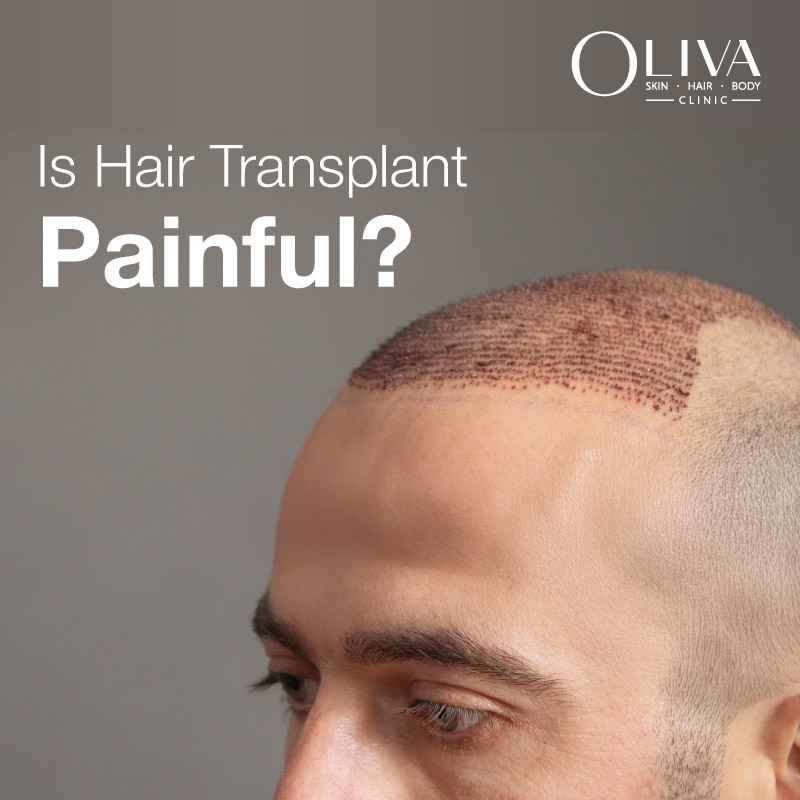
Is Hair Transplant Painful? Know The Truth About Discomfort & Recovery
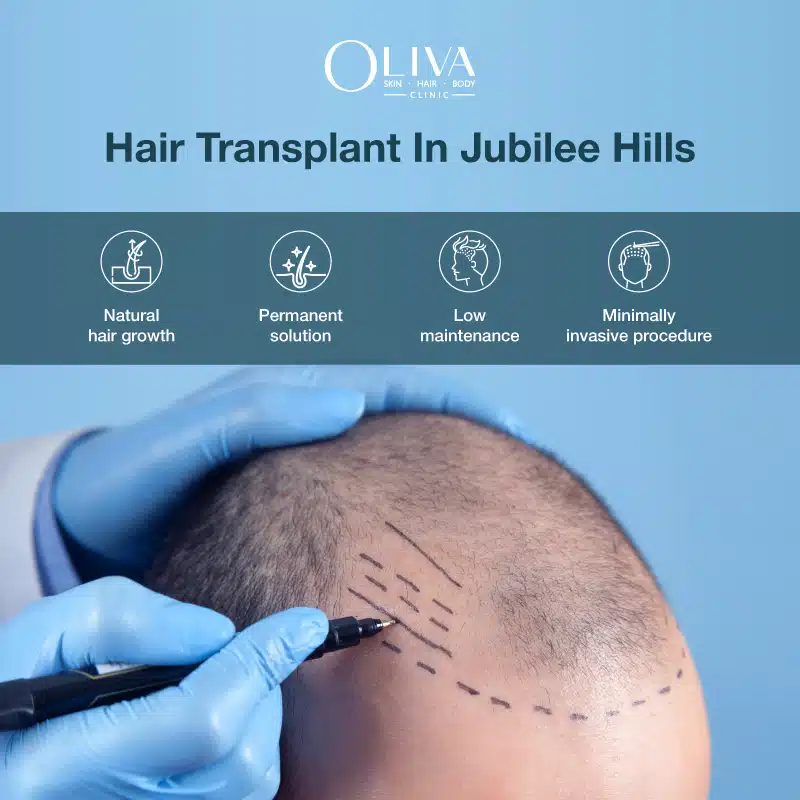
Hair Transplant in Jubilee Hills: Expert Surgeons, Transparent Cost & Permanent Results
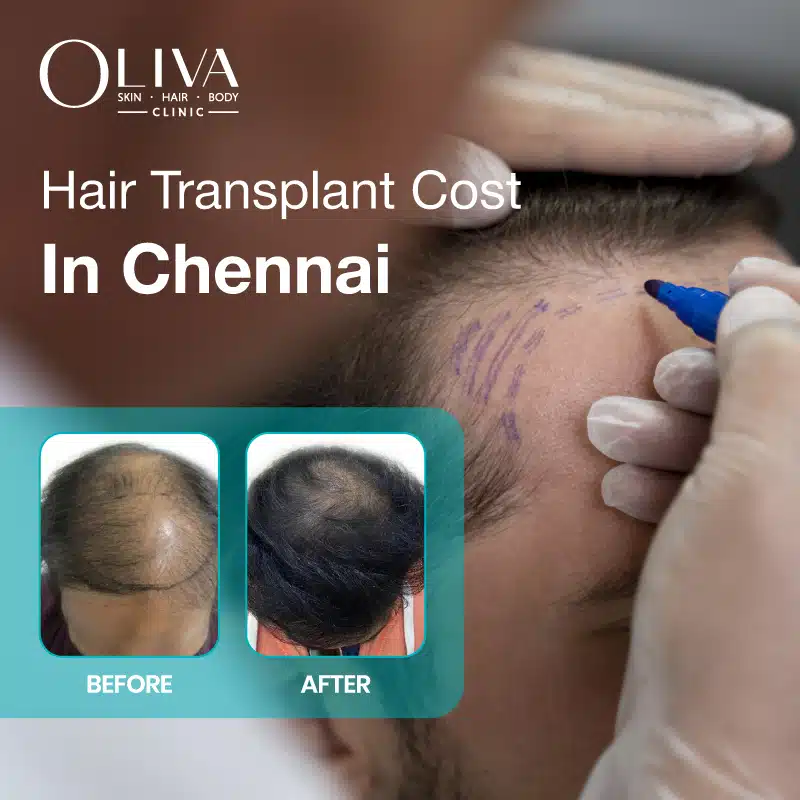
Hair Transplant Cost In Chennai: Price Starts At INR 55
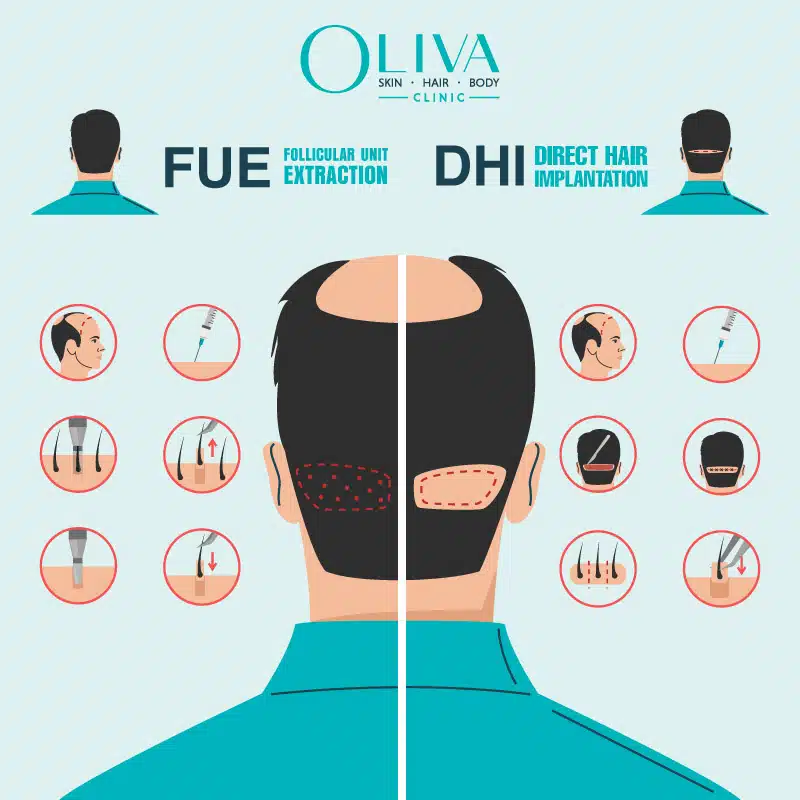
DHI vs FUE: Which Hair Transplant Is Better?
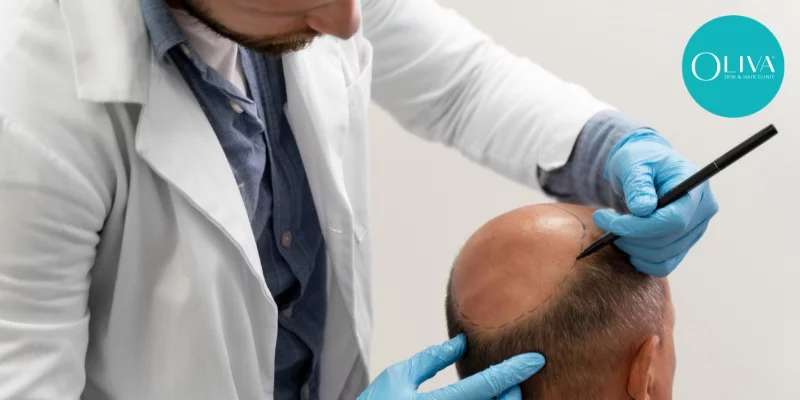
Hair Transplant Cost In India – Price Starts At INR 35,000



